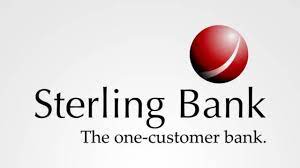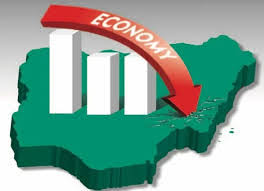As an acronym for Science, Technology, Engineering, Arts and Mathematics, STEAM education touches every aspect of humanity; BINTA SHAMA reports.
Innovation is in everything
According to study, innovation is a means in which one generates new ideas and approaches. Innovation results in new knowledge which, in turn, leads to the development of new or improved products and processes. Moreover, innovation is not limited to science and technology, nor is it restricted to new products and processes. Although, according to the OECD’s “Oslo Manual” reports that “Scientific knowledge and engineering skills are a primary support for business innovation,”
Walter Isaacson said in his biography of Steven Jobs that Jobs’ success and that of Apple resulted from the intersection of liberal arts and engineering. In Jobs’ view, the liberal arts were essential to the creative process at Apple and helped ensure the appeal of its innovative products. The world is speedily reforming, and on the other hand, Nigeria must work and step forth in support of what the federal government is doing through STEAM in the educational system via ministries, parastatals and how schools are making headway to introduce them.
STEAM helps make a child to be educated, innovative, and an entrepreneur. Speaking to Blueprint, the Proprietress, Pinky and the Brain Schools, Mrs Juliana Usman, said, “Our children are exposed to too much cognitive work. They write and read so many theories and when asked, the child will recite it very well. But when asked to explain it practically, they tend to get lost. The girl child in our society particularly in Nigeria, the middle belt, to get the total of a young child, the child must first be educated, innovative, and an entrepreneur to take her to the peak where he or she ought to be to help exhibit one’s talent.
Speaking further on STEAM, by the time the child finishes innovating all kinds of things like tie and dye, so will the child sit and ask him or herself on what to do, ‘If I should be good in engineering or this particular field’? For instance, a child that is good in tie and dye will say he can be an entrepreneur and become an employer of labour thereby producing plenty products and selling. You now see we are already tailoring the child on making things to sell because of what we have exposed the child into,” she added.
Encouraging pupils through STEAM to become great innovators
According to the Head of School Pinky and the Brain Schools, Mr. Justin Kumamiyol Asua, “the essence of introducing STEAM as a club in our curriculum is to promote arts alongside science oriented courses. Generally our country got its level of education from the white man and the level of our education is plural, that is to only occupy offices, no creativity was involved, (i.e. the non-technical approach of education which has received low or no attention whatsoever.
“I say this because, when our people graduate, they don’t have jobs and may lack a means of livelihood. Critically looking at what the kids have done and displayed here is great and it’s only left for us to harness it. By the time we do this, definitely there will be something better, and in turn have a generation of educators that will be groomed and better for them than our own level who were only trained to occupy offices.
“This will lead to them having handiwork like you can see here today. Creativity in the kids, how they used cartons, plastics, wastes, etc. to create different things like houses, standing fans, torchlight, cars, tie and dye, sewing, etc. We usually have exhibitions and the main essence is to keep them abreast, busy, up and doing so as to be independent in all their activities as well keep building on it, till perfection. We have scientist, Innovators, in our midst to create a lot of things and our society will take a different turn to avoid depending on the Western world for virtually everything and even the tiny details which in turn isn’t helping us and that is why you see mass unemployment.
“This is why we are trying to create awareness in the hearts of the younger generation so they will begin to progress as they grow to have what will sustain them and they will no longer have complete dependency on government of Nigeria.
When we introduced this method, we asked them what they could produce and we also worked on the strength of our students in the area of what they are good in, so as to perfect their hidden and inner skills. We, on our part, only assisted them using gums, paper cellotape, etc. as an avenue to achieve their aims.
“At the level now that they have shown interest, the only thing they need is our motivation to become great minds. And it will interest you to know that the innovation was caught-up by all level of the school students both the lower and higher arm of the school.
“Moreover the secondary school were perfect because of their age brackets and level of education and experience. This activity took place right from the reception class to the secondary level. But for the nursery it is what Montessori has introduced, but actually seeing those ones they will know that learning with concrete approach will build up something,” she said.
While sharing his experience, an 11year old student of the school in Grade 5 who participated in the STEAM, Master Habib Yusuf who created a house said he has always dreamt of being a an engineer and that “the support by my teachers and school authority introducing STEAM has really brought out the great innovator and designer in me,” he stated.
Why the introduction of STEAM
STEAM education is taking the foundation of STEM learning to the next level. STEAM educators are able to help people integrate STEM principles with the Arts for a holistic understanding of ‘our’ world. Keep reading to learn more about how to pursue a rich career involving this innovative education principle.
If you’re familiar with STEM education, then you already know a bit about STEAM education. STEAM stands for Science, Technology, Engineering, Art, and Math-a powerful combination of topics and techniques for educating the society.
When it comes to art, it goes beyond aesthetics. The ‘A’ includes the liberal arts as well, language arts, social studies, physical arts, fine arts, and music.



